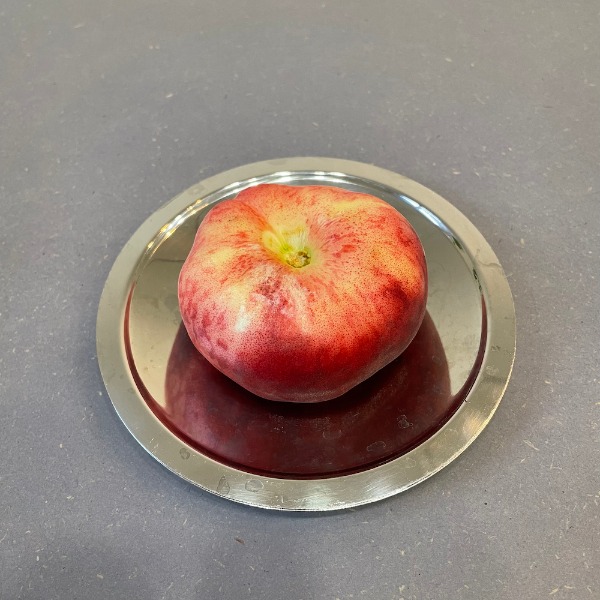| 일 | 월 | 화 | 수 | 목 | 금 | 토 |
|---|---|---|---|---|---|---|
| 1 | 2 | 3 | 4 | |||
| 5 | 6 | 7 | 8 | 9 | 10 | 11 |
| 12 | 13 | 14 | 15 | 16 | 17 | 18 |
| 19 | 20 | 21 | 22 | 23 | 24 | 25 |
| 26 | 27 | 28 | 29 | 30 | 31 |
- JPA
- BOJ
- framework
- 연습문제
- 우아한테크캠프
- mobx
- 단위테스트
- 웹프로그래밍
- springboot
- 알고리즘
- Vue
- Backtracking
- 우아한형제들
- Algorithm
- Java
- codeground
- 프레임워크
- Spring
- TypeScript
- 데이터베이스
- JavaScript
- 탐색알고리즘
- 백준
- Database
- BAEKJOON
- react
- DFS
- SQL
- BFS
- Vue.js
- Today
- Total
설모의 기록
[백준 1753] 최단경로 본문
이 문제는 다익스트라 알고리즘의 대표 문제입니다. 다익스트라 알고리즘 개념에 대해서 잊어버려서 개념부터 다시 보고 온,,
다익스트라 알고리즘은 가중치가 존재하는 그래프에서 정점과 정점사이의 최단거리를 구할 때 사용 되는 알고리즘 입니다.
처음엔 다익스트라 알고리즘 개념만 보고 온 상태로 문제를 풀었습니다. weight 를 int[nV + 1][nV + 1] 배열로 만들어 사용했더니 런타임 에러가 났습니다.
왜그러나 했는데 이차원 배열일 경우에는 사용하지 않는 인덱스도 너무 많았습니다.
게다가 정점의 개수 nV 가 20,000 개라면, weight 배열에만 20,000 * 20,000 * 4 byte 가 필요하기 때문에 메모리 낭비입니다.
알고리즘 문제를 풀 때 다익스트라 알고리즘은 우선순위 큐와 함께 사용하는 것이 좋다고 합니다. 큐에 검사해야 하는 정점의 정보를 가진 Vertex 객체를 담고, while 문을 돌아 계속 검사하는 방식입니다.
푸는 방식
- 정점마다 ArrayList 를 생성해 weight 에 담습니다.
- 시작노드를 큐에 먼저 담습니다.
- 큐가 비어있을 때까지 while 문을 돌면서 비교할 노드의 distatnce 가 (큐에 들어있는 정점의 distance + 큐 정점과 비교 정점사이의 가중치) 와 비교해서 큐에 넣
을지를 결정합니다.
import java.io.BufferedReader; import java.io.BufferedWriter; import java.io.IOException; import java.io.InputStreamReader; import java.io.OutputStreamWriter; import java.util.ArrayList; import java.util.PriorityQueue; import java.util.StringTokenizer; class Vertex implements Comparable<Vertex> { int node, dist; Vertex(int node, int dist) { this.node = node; this.dist = dist; } @Override public int compareTo(Vertex o) { return this.dist < o.dist ? -1 : 1; } } public class Main { static ArrayList<ArrayList<Integer>> weight = new ArrayList<>(); static int[] distance, visit; static int nV, nE, start; static final int INF = Integer.MAX_VALUE; public static void main(String[] args) throws IOException { BufferedReader br = new BufferedReader(new InputStreamReader(System.in)); BufferedWriter bw = new BufferedWriter(new OutputStreamWriter(System.out)); StringTokenizer st = new StringTokenizer(br.readLine()); nV = Integer.parseInt(st.nextToken()); nE = Integer.parseInt(st.nextToken()); start = Integer.parseInt(br.readLine()); distance = new int[nV + 1]; visit = new int[nV + 1]; for (int i = 0; i < nV + 1; i++) { distance[i] = INF; weight.add(new ArrayList<>()); } // 가중치 입력 for (int i = 0; i < nE; i++) { st = new StringTokenizer(br.readLine()); weight.get(Integer.parseInt(st.nextToken())).add(Integer.parseInt(st.nextToken()) * 11 + Integer.parseInt(st.nextToken())); } dijkstra(start); for (int i = 1; i <= nV; i++) { bw.write((distance[i] == INF ? "INF" : distance[i]) + "\n"); } bw.flush(); bw.close(); br.close(); } public static void dijkstra(int start) { visit[start] = 1; distance[start] = 0; PriorityQueue<Vertex> pq = new PriorityQueue<>(); pq.add(new Vertex(start, distance[start])); while (!pq.isEmpty()) { int cost = pq.peek().dist; int here = pq.peek().node; pq.remove(); if (distance[here] < cost) continue; ArrayList<Integer> li = weight.get(here); for (int x : li) { int node = x / 11; int weight = x % 11; if (distance[node] > cost + weight) { distance[node] = cost + weight; pq.add(new Vertex(node, distance[node])); } } } } }
'알고리즘' 카테고리의 다른 글
| [백준 11866] 조세퍼스 문제 (0) | 2017.12.20 |
|---|---|
| [백준 1260] DFS 와 BFS (0) | 2017.12.20 |
| [백준 1966] 프린터 큐 (0) | 2017.12.20 |
| [백준 11559] Puyo Puyo (0) | 2017.12.11 |
| [백준 2146] 다리만들기 (0) | 2017.12.10 |
